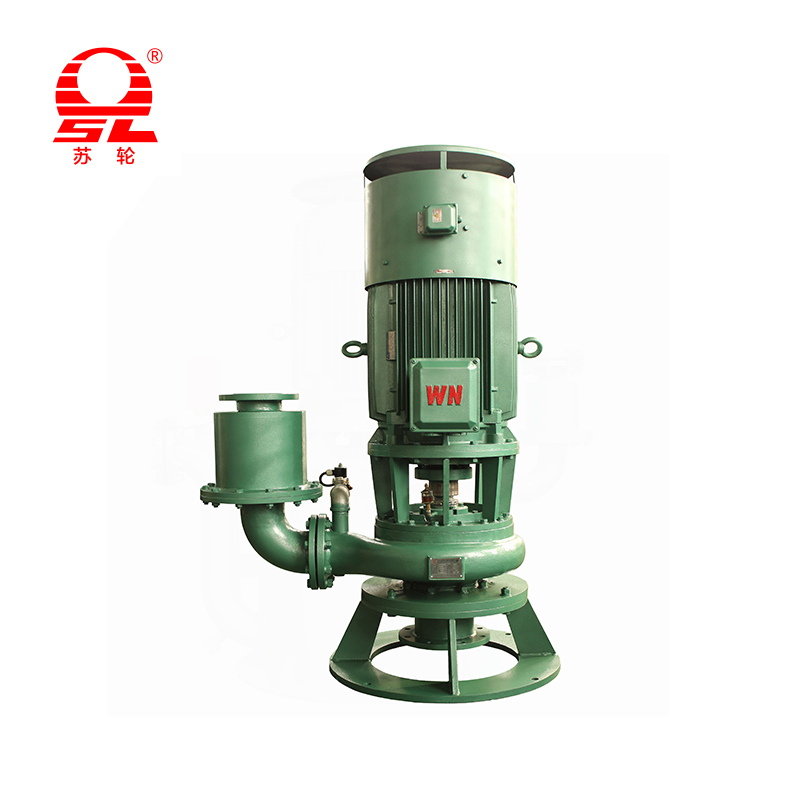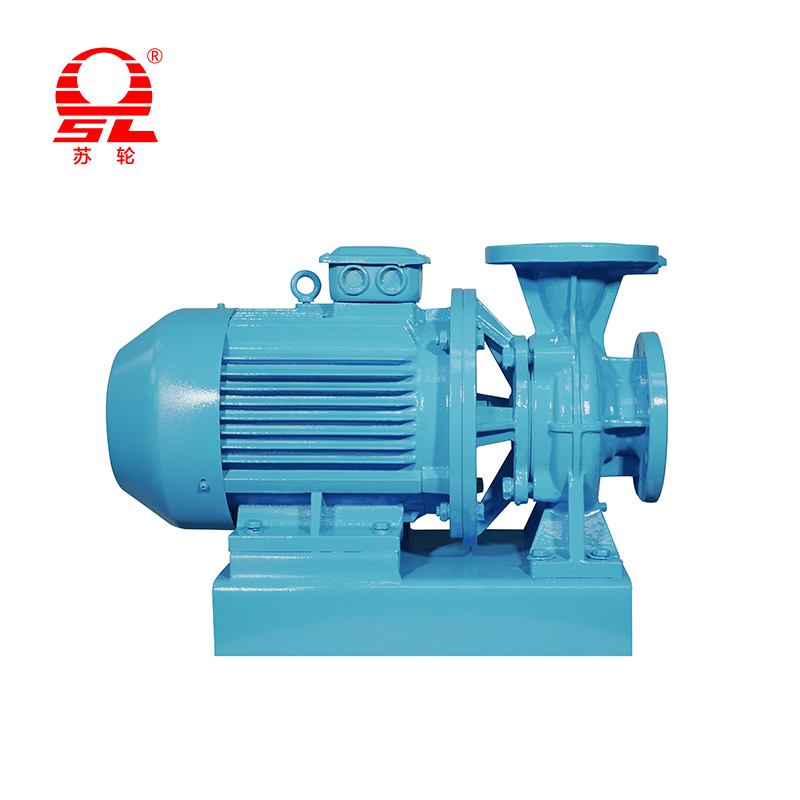What are the key differences in application between centrifugal sewage pumps and submersible sewage pumps
 2025.10.28
2025.10.28
 Industry News
Industry News
In sewage treatment and drainage systems, centrifugal and submersible sewage pumps are the two most common types of pumps. Choosing the right pump type directly impacts system stability, operational efficiency, and maintenance costs.
1. Differences in Structure and Operating Principle
Centrifugal sewage pumps utilize a traditional impeller, bearing, and pump casing design. They are typically installed on the ground or in a pump room, pumping sewage to the desired head through a suction pipe. Their operating principle relies on a high-speed rotating impeller to transfer mechanical energy to the liquid, converting pressure and velocity. Centrifugal pumps are suitable for continuous, stable flow rates and can handle medium heads and medium solids concentrations.
Submersible sewage pumps feature an integrated motor and pump body design, operating entirely immersed in the liquid, drawing liquid directly at the pump inlet. Submersible pumps eliminate the need for a suction pipe and foot valve, reducing the risk of cavitation and making them suitable for environments with unstable liquid levels or deep wells. Submersible pumps are compact and typically equipped with a mechanical seal or submersible cable waterproofing system. They are suitable for handling sewage containing suspended solids, fibrous impurities, and silt.
2. Installation Methods and Application Scenarios
Centrifugal sewage pumps are often installed in pump rooms or on the ground, making them suitable for fixed pipe networks and large-scale sewage treatment systems. This installation method facilitates maintenance and overhaul, allowing for flexible adjustment of suction pipe, head, and flow parameters. They are commonly used in municipal drainage, industrial wastewater treatment, and large-scale building sewage systems. Centrifugal pumps are suitable for applications where the liquid contains small solid particles and low levels of fibrous impurities. They offer high operational stability and are suitable for parallel operation of multiple pumps or backup pump designs.
Submersible sewage pumps are primarily designed for direct immersion in pump wells or liquid reservoirs, making them suitable for stormwater drainage, basement drainage, and small- to medium-sized sewage treatment projects. Submersible pumps can operate in environments with frequent liquid level fluctuations and limited pump space, making them ideal for wastewater with high solids content or high levels of fibrous impurities. Submersible pumps eliminate the need for complex piping layouts, reducing construction costs and footprint, while also minimizing resistance and cavitation risks in the suction pipe.
3. Comparison of Operating Efficiency and Energy Consumption
Centrifugal sewage pumps achieve high efficiency within their designed flow and head ranges. Especially when operated in parallel, they offer easy adjustment and significantly reduce energy consumption. Because they are installed in a dry environment, motor cooling and maintenance are easier, making them suitable for long-term continuous operation.
Because the motor is immersed in the liquid, submersible sewage pumps dissipate heat effectively, allowing them to operate continuously in high-temperature, high-load environments. Submersible pumps offer flexible starting, making them suitable for systems with intermittent drainage or large liquid level fluctuations. However, when operating outside the design flow range, their efficiency may decrease, resulting in slightly higher energy consumption than comparable centrifugal pumps. Therefore, properly matching head and flow parameters is key to optimizing submersible pump operation.
4. Maintenance and Service Life
Centrifugal sewage pumps facilitate regular maintenance. The pump shaft, bearings, and impeller are easily disassembled and assembled, making component replacement simple. Their service life is relatively unaffected by the operating environment. However, attention should be paid to issues such as suction line cavitation, pump chamber blockage, and seal wear.
Submersible sewage pumps are relatively complex to maintain. Because they are completely immersed in the liquid, disassembly and maintenance require lifting the equipment, and the mechanical seals and cable connectors are susceptible to wear. Submersible pumps generally have a slightly shorter design life, but the use of wear-resistant materials and anti-entanglement impellers can extend their service life. Submersible pumps require more frequent maintenance than centrifugal pumps when handling wastewater with high solids or fiber content, but they are more adaptable to complex liquid level environments.
5. Application Selection Recommendations
The decision between a centrifugal or submersible sewage pump should be based on a comprehensive assessment of the project scale, sewage characteristics, installation environment, and maintenance requirements. Centrifugal pumps are suitable for fixed pump rooms, high flow rates, and low-solids wastewater. Submersible pumps are suitable for pump wells, small projects, wastewater with high solids or fibrous impurities, and environments with frequent liquid level fluctuations. Combining the two can also create a flexible and efficient wastewater disposal solution.

+86-0523- 84351 090 /+86-180 0142 8659

 English
English русский
русский عربى
عربى bahasa Indonesia
bahasa Indonesia










